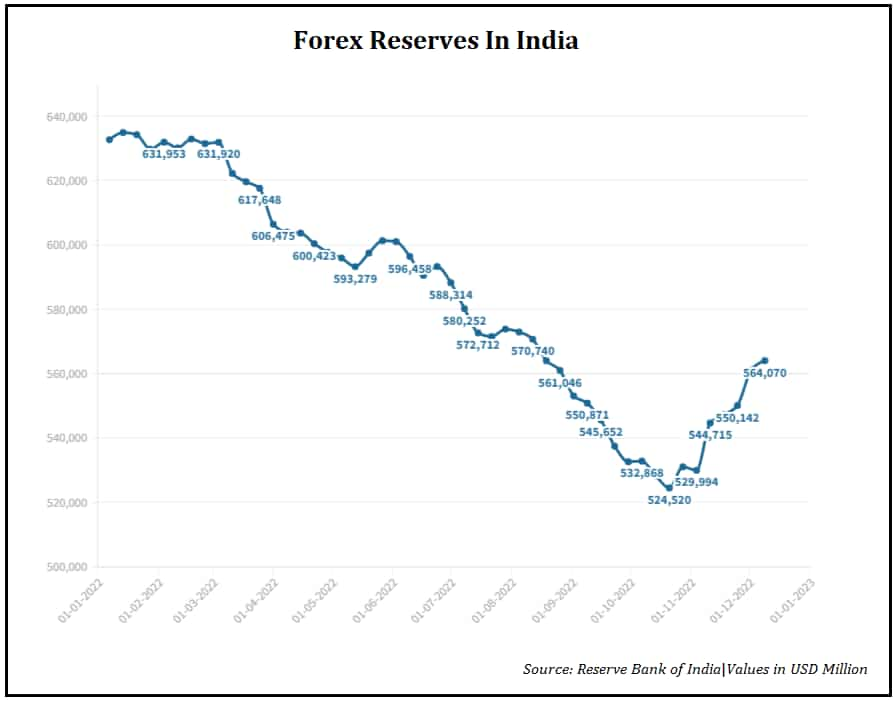India’s foreign exchange reserves surged to a record high of $419.67 billion in the week ended August 3, 2018, according to data released by the Reserve Bank of India (RBI). This represents an increase of $3.1 billion over the previous week and marks another milestone in the country’s economic growth story.

Image: www.siasat.com
The rise in foreign exchange reserves is primarily attributed to a strong inflow of foreign direct investment (FDI) and portfolio investments. In July 2018 alone, India attracted $9.16 billion in FDI and $4.92 billion in portfolio investments. This influx of foreign capital has helped to strengthen the rupee against the US dollar and contribute to India’s overall economic stability.
Factors Contributing to India’s Forex Reserves Growth
The growth in India’s forex reserves can be attributed to several factors, including:
- Strong FDI inflows: India has emerged as a major destination for foreign direct investment, thanks to its favorable business climate and growing consumer market. This has led to a steady increase in FDI inflows, which have played a significant role in boosting the country’s foreign exchange reserves.
- Foreign portfolio investment: Foreign investors have been attracted to India’s strong economic growth prospects and relatively high interest rates. This has resulted in a surge in foreign portfolio investments, which have further contributed to the growth of forex reserves.
- Reserve Bank of India (RBI) intervention: The RBI has been actively intervening in the foreign exchange market to manage volatility and support the rupee. This intervention has helped to stabilize the rupee’s value and prevent sharp fluctuations, which could have adversely affected the country’s economy.
Benefits of High Forex Reserves
The record high foreign exchange reserves have several benefits for India, including:
- Increased economic stability: High forex reserves provide a cushion against external shocks, such as global economic slowdowns or currency crises. This helps to protect the country’s economy and maintain macroeconomic stability.
- Protection against capital outflows: In the event of a sudden reversal in capital flows, India’s high forex reserves will help to cushion the impact and prevent any major damage to the economy.
- Improved credit rating: A high level of foreign exchange reserves can improve India’s credit rating, which can lead to lower borrowing costs and greater access to international capital markets.
Importance of Forex Reserves for India
India’s foreign exchange reserves are a key indicator of the country’s economic health. They play a crucial role in:
- Maintaining exchange rate stability: Forex reserves are used to intervene in the foreign exchange market to manage volatility and prevent sharp fluctuations in the value of the rupee.
- Supporting economic growth: Forex reserves provide a source of foreign currency that can be used to finance imports, such as essential commodities and capital goods. This helps to support economic growth and development.
- Meeting external obligations: Forex reserves are used to meet India’s external obligations, such as debt repayment and import payments. This helps to maintain India’s reputation as a responsible borrower and trading partner.

Image: www.zeebiz.com
India’S Forex Reserves July 2018
Conclusion
India’s forex reserves have hit a record high in July 2018, crossing the $419 billion mark. This growth is mainly attributed to strong FDI inflows, portfolio investments, and prudent management by the RBI. It reflects the strong macro-economic fundamentals of India and is beneficial for various reasons like maintaining exchange rate stability, supporting economic growth, and providing cushion against external shocks.






